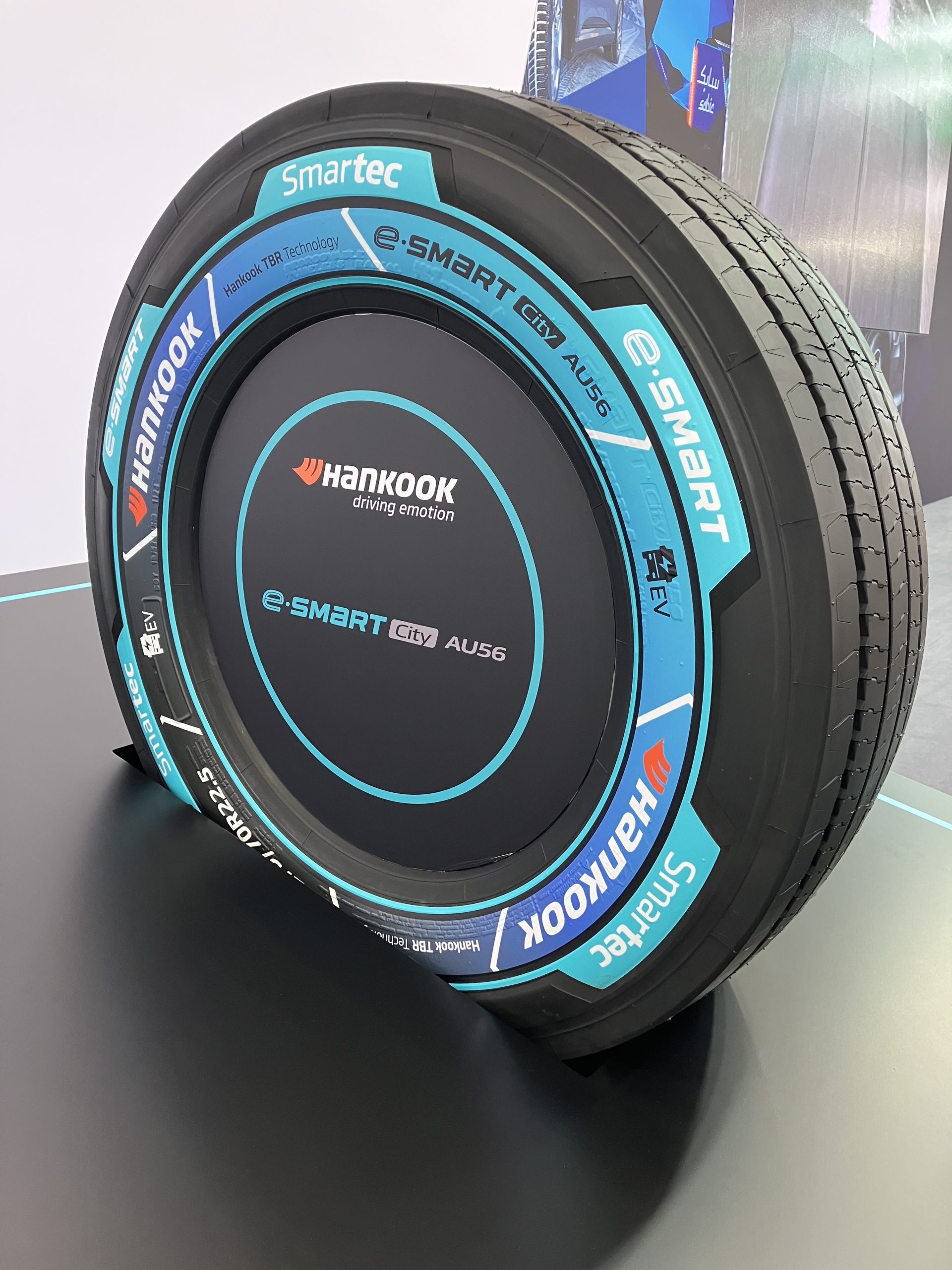Tech race in truck and bus tyres
Tech race in truck and bus tyres
Premium tyre makers are in a technology race to provide ever -increasing road performance using more sustainable materials and with a smaller carbon footprint throughout the whole value chain, from materials to tyre disposal.
There are three key areas of innovation which make it possible to produce tyres that have better road performance as well as consistency of performance from the first to last millimetre of tread wear: artificial intelligence (AI), materials science, and 3D metal printing of tread moulds. These three technologies are advancing rapidly. In fact, a tyre made today would have been close to impossible to design and manufacture even a few years ago.
AI and Supercomputing
Digital transformation is actively underway in the automotive industry. For instance, Hankook is developing new truck and bus products using a virtual tyre model. Normally, the tyre development process consists of manufacturing and testing actual tyre samples numerous times to achieve the target performance. However, product development through the virtual tyre model uses a computer program instead. This program designs a virtual tyre while predicting and verifying its performance through various physical data, past test data, and AI algorithms. This process requires only one final physical validation test, so the development cost and time can be decreased quite significantly.
The compound is the single most important element of a tyre. It is created by mixing various materials, including natural rubber, synthetic rubber, and carbon black. The development process is very complex as its properties vary depending on variables such as temperature, mixing procedure, and pressure. Hankook has developed the Virtual Compound Design (VCD), a model for predicting compound properties. When developing tyre compounds, VCD technology uses AI analysis to infer the properties of compounds and create optimal compound combinations. The latest VCD system repeatedly reflects the results of calculations through virtual simulations on a cloud platform. By utilising the accumulated data, it is expected to significantly shorten the development period, as it bypasses the process of actually having to formulate and test compounds.
Materials science
Hankook has a sustainability strategy called “E.Circle”. In terms of this strategy, the company will commit to replacing conventional petroleum-based materials with 100% sustainable materials by 2050 to reduce CO2emissions. The company is already using about 30% sustainable materials in its latest truck and bus tyres.
Generally speaking, those sustainable raw materials are natural rubber, recovered carbon, and reclaimed rubber. Furthermore, there are plans for applying a variety of sustainable materials including bio-fillers made from recycled agricultural waste and ISCC-certified synthetic rubber made from feedstock derived from post-consumer plastics (for an explanation of ISCC-certified synthetic rubber, see the sidebar).
In Europe, the impending new Euro 7 legislation will, in addition to governing emissions, include regulations on tyre and road wear particles (TRWP) based on tyre wear rate. The spread of EV trucks and buses, meanwhile, is expected to proceed at an increasingly rapid pace. Therefore, Hankook is promoting compound development and improvement with the primary objective of improving wear performance and low rolling resistance performance.

3D Metal Printed Moulds
Thanks to advances in metal 3D printing technology, the Hankook premium tyre tread design can incorporate some advanced features that happen to be completely hidden from view. These hidden grooves and tread features strengthen the new tread block by locking together the tread sections when they are in contact with the road. This more rigid tread block means less heat and less wear. It also means lower rolling resistance and, accordingly, increased fuel efficiency and mileage performance. Furthermore, as the new tyre tread block wears, the hidden features are revealed, providing new gripping surfaces and water evacuation channels. The tyre can thus maintain grip and traction performance even when it is 70% or more worn.
It is almost impossible to realise those kinds of patterns without highly developed 3D printed tyre mould and manufacturing techniques. Hankook foresaw this in advance and so the company started studying 3D printing and ways to integrate the technology into the tyre mould industry as early as 2013. The tyre producer is now leveraging 3D printing processes to produce 3D tread features including sipes, grooves, and channels in the latest generation premium tyre ranges.
Gains of 20% over previous generation products are now possible thanks to rapid advances in these three key technologies, hence why Hankook is renewing its range of products. Today, more than 80% of sales in Europe are in tyres which were launched less than three years ago; this figure will increase thanks to the launch of latest generation products which incorporate all these technologies.
What is ISCC-certified synthetic rubber?
This refers to synthetic rubber produced according to the standards set by the International Sustainability and Carbon Certification (ISCC) system. The ISCC is a globally recognised certification system that ensures the sustainability of raw materials and the reduction of carbon emissions in various industries, including the production of synthetic rubber.
ISCC-certified synthetic rubber reduces the environmental impact of synthetic rubber production by ensuring sustainable sourcing and manufacturing processes. It promotes social responsibility in the supply chain by adhering to labour rights and fair working conditions. It can lead to cost savings in the long term through the efficient use of resources and reduction of waste.
Key features of ISCC-certified synthetic rubber include sustainability, traceability, carbon footprint reduction, and compliance with global standards, while there is also a market advantage associated with its usage.
Sustainability
The ISCC certification ensures that the synthetic rubber is produced using sustainable practices. This includes responsible sourcing of raw materials and adherence to environmental and social standards.
Traceability
ISCC certification provides a chain of custody from the raw material to the final product. This traceability helps in verifying that the synthetic rubber comes from sustainable sources.
Carbon Footprint Reduction
The certification involves measures to reduce carbon emissions during the production process. This contributes to lower overall greenhouse gas emissions associated with synthetic rubber manufacturing.
Compliance with Global Standards
The ISCC certification aligns with various international standards and regulations, ensuring that the certified synthetic rubber meets global sustainability criteria.
Market Advantage
Products with ISCC certification can be more attractive to environmentally conscious consumers and industries looking to reduce their ecological footprint.
ISCC-certified synthetic rubber can be used in a variety of applications, including:
– Automotive tyres
– Industrial products
– Consumer goods
– Medical devices
Published by
Focus on Transport
focusmagsa




